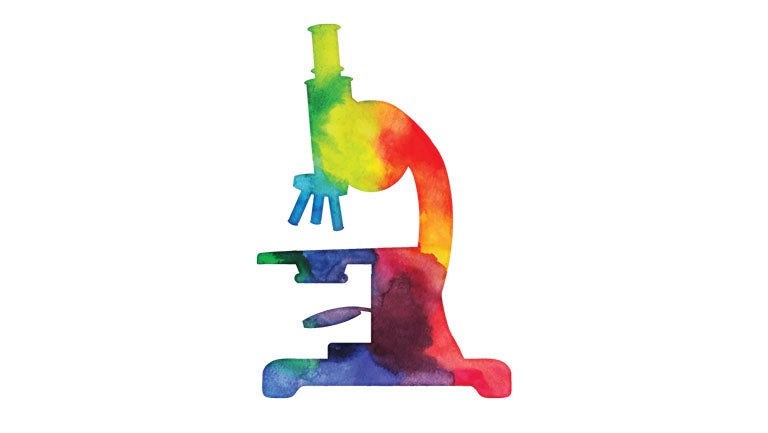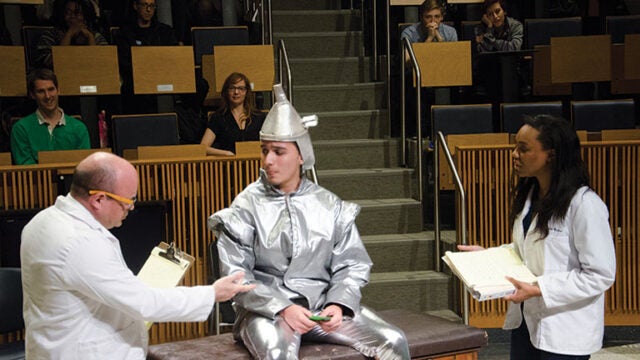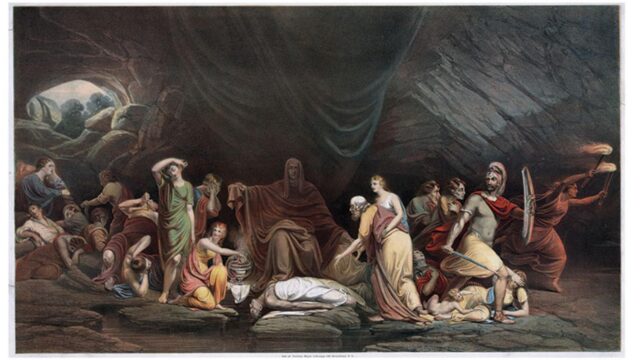
Category: Healing Arts, Health Magazine
Title:From Compounds to Clinics, Classrooms to Community
Date Published: April 16, 2018

By Monica Javidnia
From an idea scribbled in a lab notebook to a therapy administered in a clinic, the path toward developing a treatment takes years. And more often than not, the process fails.
To address the deficiencies in this approach, the National Center for Advancing Translational Science has funded the Clinical and Translational Science Award (CTSA) consortium, comprised of over 60 major academic medical centers across the country, including Georgetown. Established in 2010, the Georgetown-Howard Universities Center for Clinical and Translational Science, more commonly known as ‘GHUCCTS’ (pronounced to rhyme with “ducks”) encompasses five institutions: Georgetown University, Howard University, MedStar Health Research Institute, Oak Ridge National Laboratory, and the Washington DC Veterans Affairs Medical Center.
“From discovery of a molecule to the eventual testing and use of a drug is a 20-year process on average, even longer,” explains Joseph Verbalis, MD, co-director of GHUCCTS. “And most of the drugs that get into clinical trials actually fail. A major idea of a CTSA is to develop efficiencies in how we research treatments to make the process quicker, and more successful.”
Drawing from the complementary strengths of each institution, GHUCCTS has proven to be a model for scientific advancement in the areas of research and innovation, community engagement and diversity, and education and training programs. This is an immense undertaking, as GHUCCTS partners span from Tennessee to Maryland and include academic, government, and private institutions.
It comes as no surprise that research is costly, and no lab is an island. GHUCCTS co-director Thomas Mellman, MD leads the efforts toward promoting innovative and collaborative work with the Interdisciplinary Collaborative and Investigator-Initiated Pilot Project initiatives. These programs provide competitive funding toward a wide array of research proposals, from developing dengue virus replication inhibitors to assessing telerehab in aphasia, allowing investigators to develop preliminary data for a larger grant.
GHUCCTS’ successes are not limited to those in faculty and fellow support; a large part of the mission includes preparing the next generation of translational scientists. Now in its third year, the Translational Biomedical Science Program (TBS) directed by Kathryn Sandberg, PhD funds and educates a diverse group of pre- and postdoctoral scholars from GHUCCTS institutions.
“Being able to collaborate well with others, especially across different fields, opens up whole new possibilities,” says Mary Katherine Howell, a TBS PhD student in clinical psychology. “And not just in terms of funding and audience for your research. These partnerships exponentially increase the speed at which research benefits the public.”
Ensuring the public benefit is a challenge researchers across the country face, with historical ethics atrocities and research shortcomings leading to a lack of diversity in clinical trials. With the help of the Community Advisory Board, GHUCCTS researchers tackle this by building trust in the communities they hope to serve.
“You can’t necessarily take results from one group and reliably extrapolate them to another,” states Verbalis. “Our Community Advisory Board advises us not only on specific trials and how we can better engage the community, but also on issues of gaining trust in different populations. Our CTSA has always been at the forefront of including diverse groups in our clinical trial population.”
Many funding and training opportunities are open to GHUCCTS consortium members, including undergraduate and graduate students, medical students, postdoctoral fellows, faculty, and staff. For more information, contact ghuccts@georgetown.edu.
Monica Javidnia is an amateur homesteader in Upstate New York, and a postdoctoral fellow in regulatory science and experimental therapeutics in the department of pharmacology and physiology at Georgetown University, and at the University of Rochester’s Center for Health and Technology.

Operating theater takes center stage at the university’s annual Heart of the Harvey dramatic arts festival.

Above: Rembrandt Peale’s The Court of Death, 1820 The brain—a magnificent organ that enables human expression— forms the most elaborate electrical network in the human body. At the…

Why are children with dyslexia more likely to also struggle with dyscalculia—the understanding and manipulation of numbers?…